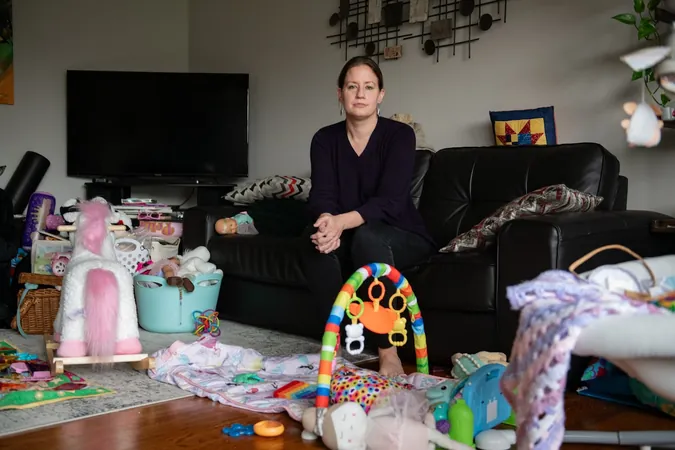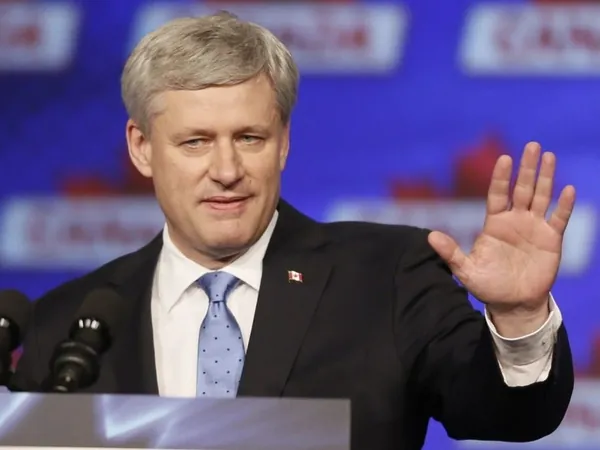
Ontario’s Child-Care Crisis: Families Face Loss as For-Profit Daycares Opt Out of Federal Funding
2024-11-20
Author: Emma
Introduction
Parents in Ontario are reeling from recent developments that could lead to a drastic increase in child-care costs. In a stroke of fortunate timing, Heather Sheen, a Toronto resident, saw her monthly daycare fees plummet from $1,550 to just $685 following Ontario's adoption of the federal child-care deal in 2022. However, her relief quickly turned to dread as her daycare facility announced it would be withdrawing from the Canada-Wide Early Learning and Child Care (CWELCC) program due to disagreements with a new province-wide funding model set to roll out in January.
The Funding Model Change
The crux of the issue lies in the new funding formula, which shifts the reimbursement structure for daycare centers. Previously, centers received compensation based on parent fees, but the new model proposes benchmark funding based on the province's estimation of typical operational costs, along with an 8% profit margin. This change has hit a nerve among for-profit daycare operators who argue that the new formula restricts their financial flexibility—potentially lowering the quality of care they are able to provide. As a consequence, families like Ms. Sheen’s are bracing for fees to surge after years of relief.
Rising Demand and CWELCC Goals
The turmoil around child-care funding in Ontario comes amid a rising demand for services, with parents increasingly frustrated by the long waitlists and limited availability. The CWELCC program aims to reduce fees to an average of $10 a day by 2026, but with many providers opting out and administrative hurdles draining resources, achieving that goal remains in jeopardy.
Diverging Opinions on Solutions
Economists and experts express contrasting views on how best to address child-care shortages. A coalition representing mainly for-profit operators advocates for direct funding to families, a model they suggest would enhance parental choice and reduce costs. Conversely, proponents of a public child-care system warn that direct payments could lead to skyrocketing costs without guaranteeing improved access.
Families Facing Uncertainty
The debate about funding models is intensifying, especially since some families, like Ms. Sheen’s, may soon find themselves having to pay exorbitant fees without clear alternatives. Already on maternity leave and surviving on employment insurance, Ms. Sheen described the future impact on her family's finances as “a shock.” Loss of subsidized care could mean paying double for services that used to be accessible.
Critique of Past Approaches
Amidst the discussions, critiques have emerged regarding historical attempts to resolve the child-care crisis through free-market approaches. Previous initiatives, such as the universal child-care benefit initiated by Stephen Harper’s government, saw payout to parents but failed to address core issues of affordability and access. Scholars such as Gordon Cleveland have noted that these strategies left many families without necessary care options while costs continued to escalate.
The Urgent Need for Solutions
Further complicating the situation is the question of immediate solutions. The need for child-care expansion has never been more pressing as families face barriers to accessing quality care—a situation made even more dire when facilities opt out of federally funded programs.
Conclusion
As Ms. Sheen searches for viable daycare options, she emphasizes the urgent need for a system that genuinely works for families. "With just a month and a half to find a new subsidized daycare, it’s going to be impossible," she lamented. The unfolding events in Ontario’s child-care system serve as a stark reminder of the challenges facing many families today. With significant shifts on the horizon, the struggle for affordable and quality child-care solutions continues—sparking a critical debate about the future of child care in Canada.









 Brasil (PT)
Brasil (PT)
 Canada (EN)
Canada (EN)
 Chile (ES)
Chile (ES)
 España (ES)
España (ES)
 France (FR)
France (FR)
 Hong Kong (EN)
Hong Kong (EN)
 Italia (IT)
Italia (IT)
 日本 (JA)
日本 (JA)
 Magyarország (HU)
Magyarország (HU)
 Norge (NO)
Norge (NO)
 Polska (PL)
Polska (PL)
 Schweiz (DE)
Schweiz (DE)
 Singapore (EN)
Singapore (EN)
 Sverige (SV)
Sverige (SV)
 Suomi (FI)
Suomi (FI)
 Türkiye (TR)
Türkiye (TR)